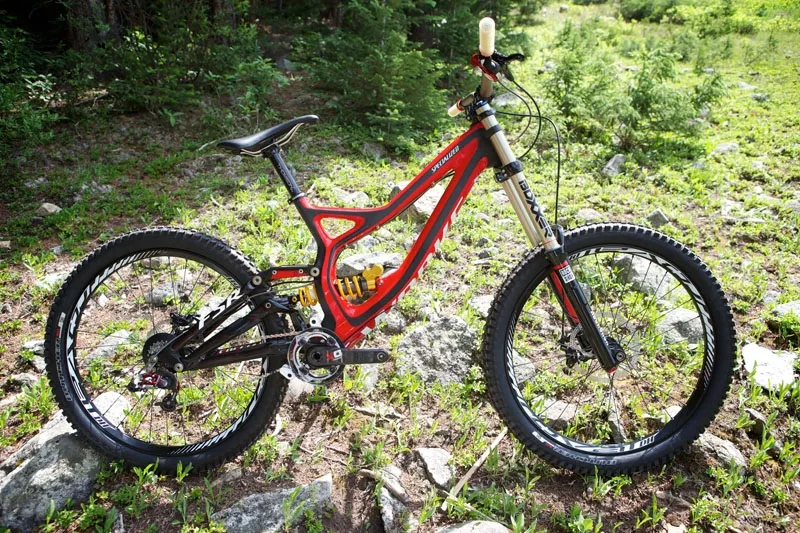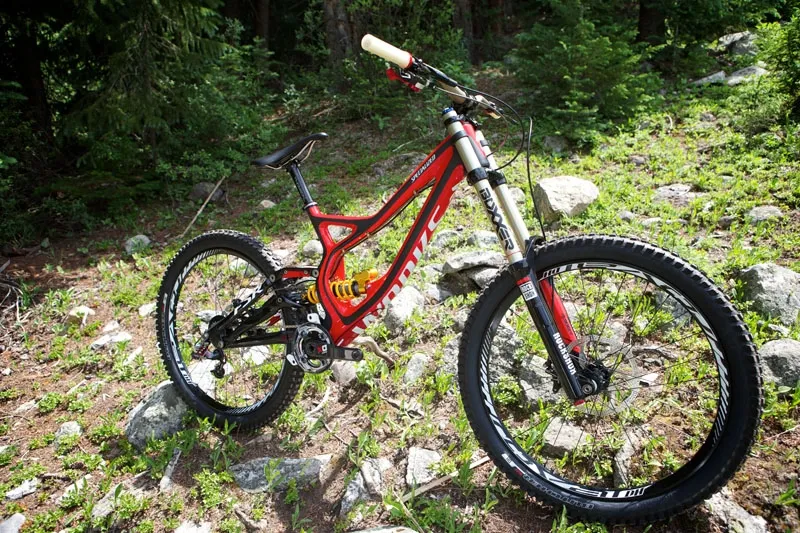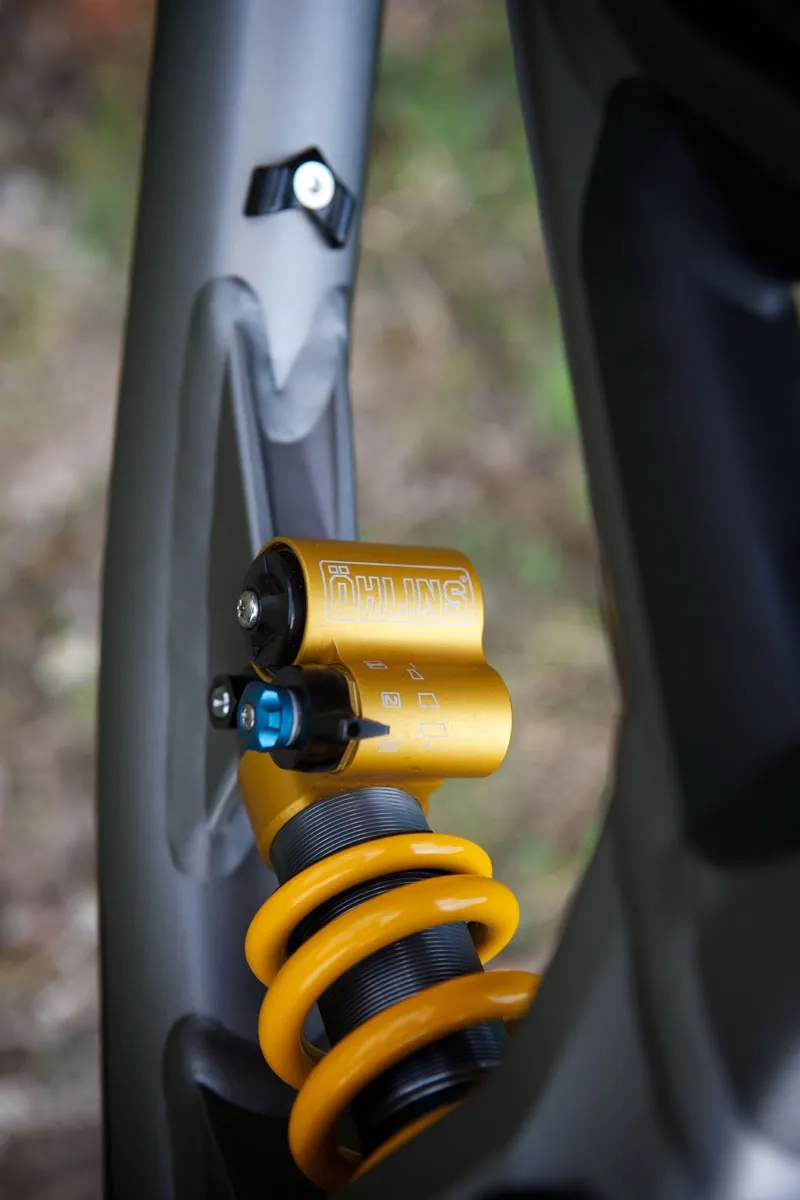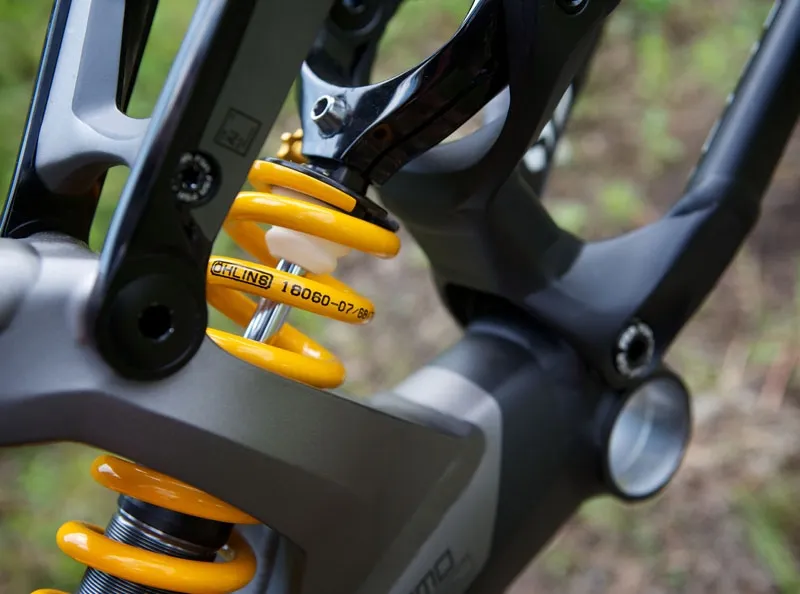Bike giants Specialized have joined forces with one of the most highly regarded suspension companies in the world, Öhlins, in a bid to make a fast bike even faster. What's resulted is the TTX, a rear shock designed to work with the Demo 8 and Enduro EVO.
Specialized 2014 coverage on BikeRadar
- Specialized 2014 road and triathlon bikes – full details
- Specialized 2014 Epic, Stumpjumper HT and Crave – first look
- Specialized 2014 trail and long travel bikes – first look
- Specialized 2014 wheels, tires, shoes and helmets
- Specialized CruX cyclocross bikes 2014 – first look
- Specialized S-Works Epic World Cup 2014 - first ride review
- Specialized Allez Race 2014 - first ride review
Öhlins TTX: more than just a yellow spring
For 2014, Öhlins set out to create a shock to work perfectly in sync with the Demo 8 downhill bike, with some key goals in mind. These were consistent damping, simple and easy-to-understand tweaks and a proper range of adjustment, including more spring rate selection and a narrower, more precise working range of adjustment.
Unsurprisingly, the TTX uses Öhlins’ proven Twin Tube design. If you’re wondering why this shock looks a little different to regular piggyback shocks, its because the layout has been changed slightly.
The stout, stumpy chambers increase surface area, which in turn helps to keep the oil temperature cooler and less prone to fluctuation. Inside sit two pressurised, nitrogen filled nitrile rubber bladders that help reduce internal pressure and the pressure differential within the shock. This helps tackle cavitation, which can lead to inconsistent damping performance.
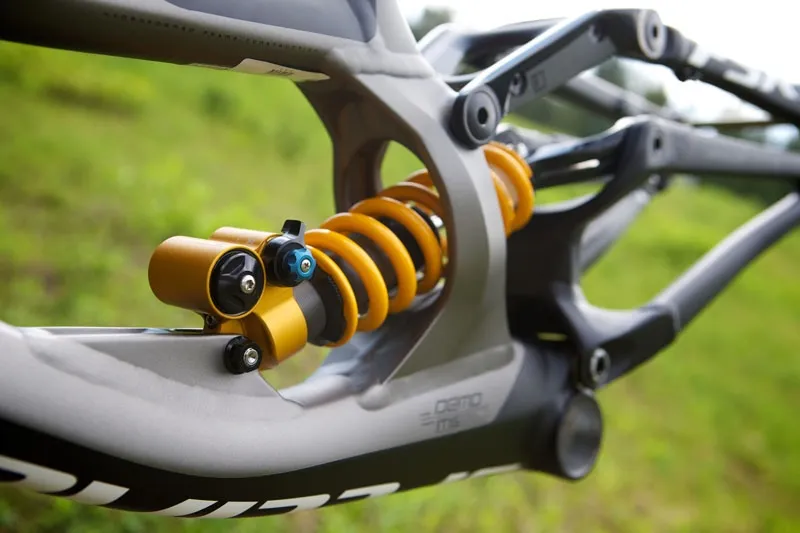
The TTX is mounted on spherical bearings to avoid the shaft bending when the back end is loaded laterally in turns or on landings
In terms of adjustment, it’s worth noting just how precise the tuning range for the TTX is, starting with the springs that are available in 23lb increments. Then there are the 16 different settings for low-speed compression, three settings for high-speed compression and seven options for low-speed rebound. If that’s not enough, there are offset eyelets to alter geometry, too.
To ensure the traction is maximised during cornering and when the bike’s back end is being thrown around, Öhlins have used spherical bearing mounts. While it might seem as though the shock is loose when the bike is static, when it’s being thrown into a turn the spherical bearings reduce the amount the shock shaft binds when the frame is loaded heavily, helping to keep grip maximised and movement as free as possible.
As soon as the Öhlins TTX shock is available, BikeRadar will have a full review.
Specialized and Öhlins partnership
It was at Specialized’s global product launch that we first got word – officially, anyway – of the collaboration between the two highly regarded companies. Although the prototype Öhlins shock had been spotted bolted to a Specialized Demo 8 at a Pro GRT race and the Val di Sole World Cup, the full story surrounding the damper shod with its distinctive yellow spring only unravelled recently in a darkened conference room at the Copper Mountain Resort, Colorado.
Many will recognise the Öhlins name from the Cane Creek Double Barrel shock and their Twin Tube technology, which helped produce a shock that really reset the bar in terms of what was possible with rear damping.
The Swedish company were set up by Kenth Öhlins back in 1976 and, since then, have had success in pretty much every sport that requires suspension. You name it, they’ve won it! Starting out in the world of motocross, Öhlins have worked across MotoGP, NASCAR, WRC, Le Mans, touring cars, Formula 3000, Supermoto and Superbikes.
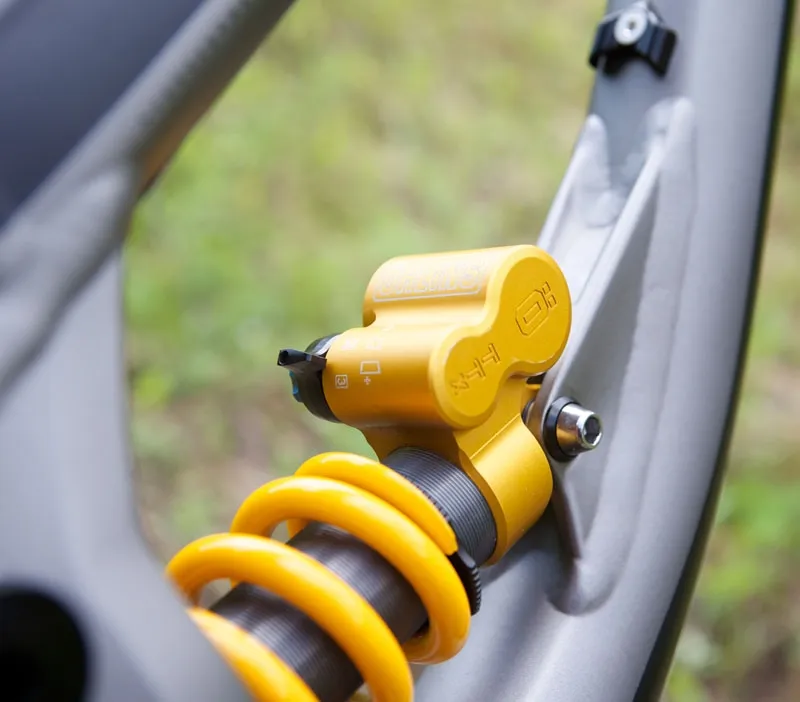
This slightly different take on a rear damper could set the new standard in DH suspension
An Öhlins shock was first ridden to World Motocross Championship victory aboard Guennady Moisseev’s KTM in 1978, while Specialized’s first World Mountain Bike Championship title was secured by Ned Overend in 1990.
Since then, both companies have gone from success to success, and it’s little wonder that they’ve teamed up on this project. So how exactly did the collaboration come to fruition? Sam Benedict, Specialized MTB product marketing manager, explained:
“It actually started with Mike McAndrews (we call him Mick – director of suspension), back in his days as a Kawasaki race mechanic. He knew Kenth Öhlins back then and kept in contact over the years. When we were thinking of what we could do to improve the traction of the Demo, the idea came up.
"Mick pursued it with his old buddies, and he and Brad Benedict [advanced R&D test rider and product developer] went over to visit the Öhlins factory a year ago. Brad showed them what downhill was all about by going to some DH tracks where they measured all sorts of forces on the bike and with the suspension.
"From there they started building shocks for Brad and the team to test. They went through a lot of tuning of the shock as well as iterations of the spherical bearing."

